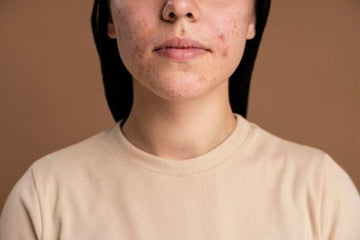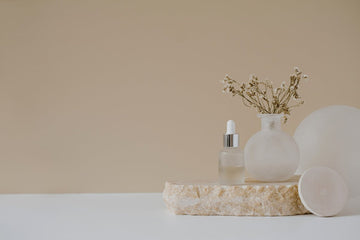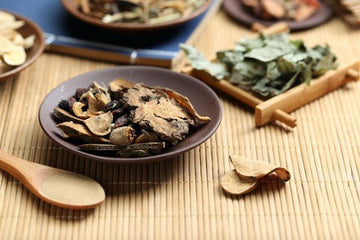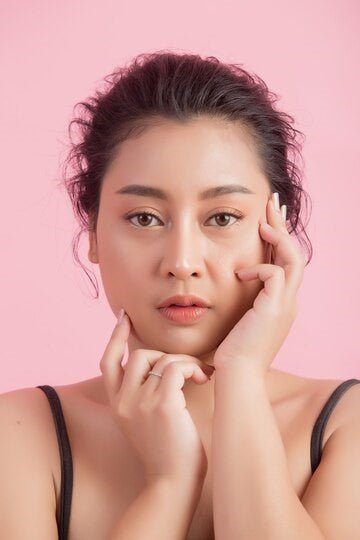Coix Seed or Job’s Tears
Coix seeds or better known as Job's tears or Chinese Pearl Barley is a common herb in TCM. They are considered slightly cold in nature, bland in taste and are used in TCM to clear heat and resolve dampness. The herb is thought to move through the lung, spleen and kidney meridians - channels through which qi (vital energy) travels in the body. A good flow of qi in the body is required for good health. In TCM, the spleen converts nutrients from food into blood and qi.
When the spleen is weak - due to a weak constitution, chronic illness, overeating, irregular meals or the consumption of spicy and raw food - dampness is said to be present in the body, which then obstructs the flow of qi. The dampness commonly gives rise to digestive ailments such as poor appetite, indigestion, bloatedness and loose stools. It can also combine with heat to give rise to damp-heat syndrome, which makes digestive ailments and oedema - the abnormal accumulation of fluid beneath the skin - more pronounced. People with damp-heat syndrome are susceptible to infections such as urinary tract infection, gout, rheumatoid arthritis and Eczema.
If you are suffering from Eczema or sensitive skin conditions, you may like to try our Calming Repair Cream. Read more on how it can help you hydrate and repair your skin by reducing excess dampness and heat.
Coix seeds are used to strengthen the spleen and act as a diuretic to remove excess fluids. Hot, humid weather and eating too much ‘heaty’ food such as durians, mangoes, and fried and spicy food makes damp-heat syndrome a common problem for many Singaporeans.
Coix seeds are frequently prescribed to those with swelling of the legs or gastrointestinal problems such as diarrhoea, poor digestion and abdominal bloating. Hence it can help in slimming as the problem is due to water retention.
How is Coix Seed good for our Skin or for Beauty?
-
It contains proteolytic enzymes that softens the keratin layers of our skin making our skin softer and smoother over time, resulting in less wrinkles and also gets rid of dark spots and blemishes.
-
Regular consumption leads to improved hydration of skin, has whitening effects and our skin will become more delicate and finer.
-
It also helps to improve acne conditions by reducing acne breakouts.
-
It is rich in Vitamins B and minerals, commonly ground into powder form, it can be taken both orally or applied externally as a face mask for its whitening effects. Vit B1 in particular helps to reduce black heads, lighten dark spots and reduces pore size.
-
It helps to reduce skin allergy conditions and sensitivity.
Coix seeds have gained a reputation for beautifying the skin, so women in Southeast Asia have been encouraged to eat Coix seeds as a cereal grain, making it a regular practice to improve complexion. A highly concentrated extract of Coix seeds produced in Japan (where it is known as hatomugi or yokui-nin) is promoted as a support for beautiful skin, hair, and nails. Coix seeds have been included in medicinal formulas for treating skin diseases, such as acne and other swellings.
A simple food recipe for treating acne is to combine 60 grams of Coix seeds with 30–60 grams of rice: cook and add sugar to taste.
Anti-allergy properties have been suggested for Coix seeds so this seed is sometimes used in treatment of allergic dermatitis. Coix seeds are also used topically in creams and lotions, said to clarify the skin, prevent skin aging, and reduce blemishes.
What are other benefits of Coix Seeds?
-
Reduce swelling, water retention
-
High in fiber, aids weight loss
-
May help to reduce cholesterol levels
Who should avoid taking Coix Seed?
-
Pregnant women should avoid using herbs with a diuretic effect, such as coix seeds.
-
Those who are dehydrated – such as having a dry throat, bad constipation, excessive perspiration or urination - are said to have no dampness within their bodies, and should avoid this herb, which may aggravate their symptoms.
-
Avoid taking Coix seed during your menstrual period as it is slightly cold in nature.
What’s the difference between Coix Seed and Barley?
They are 2 totally different plants. Barley’s scientific name is Hordeum vulgare and it’s classified as a cereal grain. Whereas Coix seed scientific name is Coix lacryma-jobi or better known as Job’s Tears. In Chinese, it’s pronounced as Yi Yi Ren (薏苡仁) or Yiren for short. However, when translated to English, some call it Chinese Pearl Barley or Chinese Barley. Coix Seeds are pearl white in colour, with a brownish groove on one side, larger in size, almost twice the size of that of barley.
Good quality Coix seeds are big, full, white grains. It can be found easily in any TCM medical halls in Singapore or in South East Asia. Supermarkets usually have it in the dried grain section.
Pic above. Coix Seed/ Job's Tears

Pic above. Barley
Coix Seed with Lily Bulbs
This super easy, light and refreshing dessert is a great and easy way to cook Coix Seeds. It is anti-aging, reduces wrinkles and whitens dark spots, a great TCM Beauty dessert for women of all ages.
Ingredients (serves 2)
-
Coix Seeds 100g
-
Fresh Lily Bulbs 30g
-
Water 8 cups
-
Rock sugar to taste (optional)
Method
-
Rinse the Coix seeds and lily bulbs with water.
-
Pre-soak the Coix seeds for 1 hr, then add water and lily bulbs and bring to boil.
-
Turn to low heat and cook for 1 hr till soften.
-
Add rock sugar to taste if needed. Serve warm.







